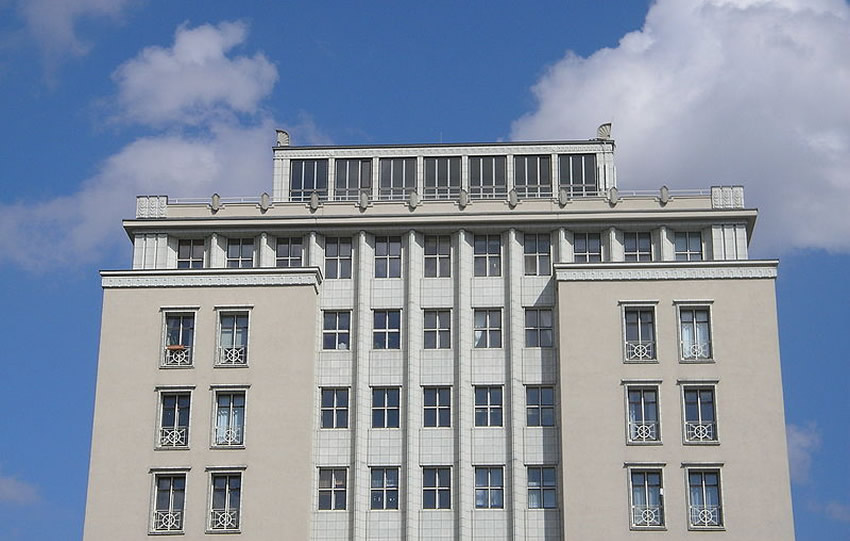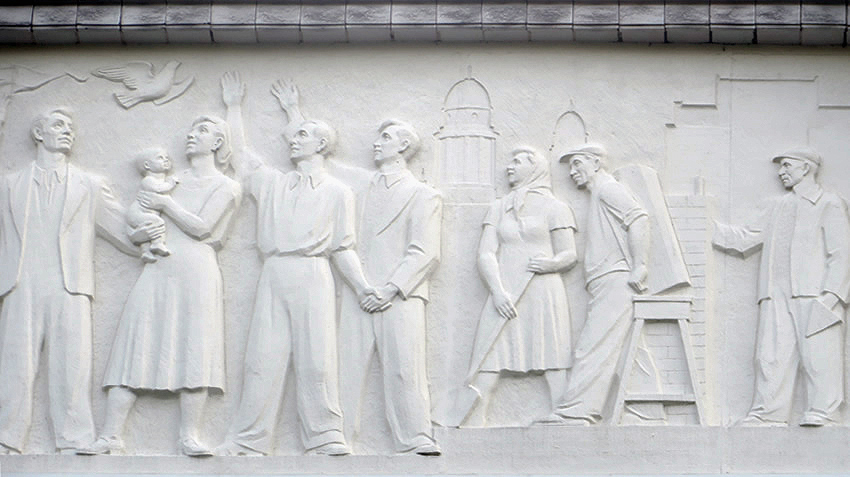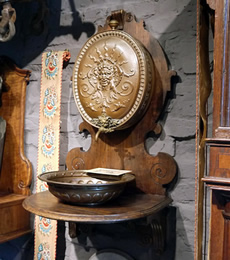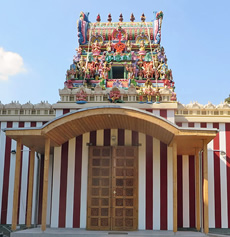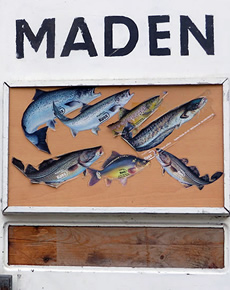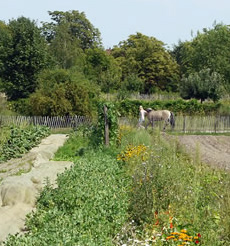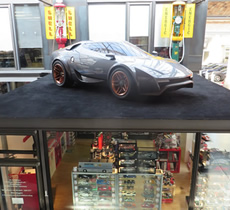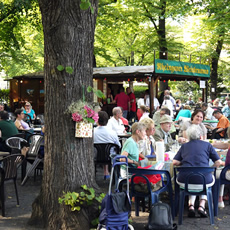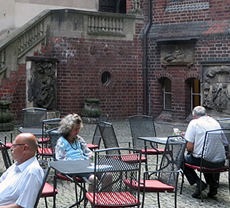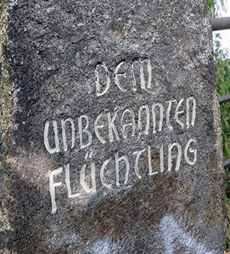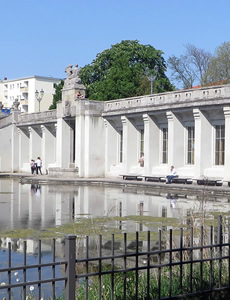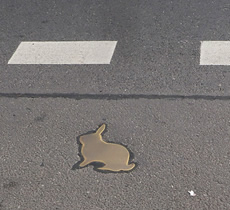Berlin
A socialist icon from Third Reich ruins (or where the Karl-Marx-Allee began)
It was built, quite literally, from the rubble of Berlin's past, including stone salvaged from Hitler's Chancellery and black marble removed from Hermann Göring's country estate.
And although few today are likely to recognise the name Hochhaus an der Weberwiese (tower block on the Weberwiese), it was once East Berlin's most celebrated building - the first of the socialist city's high-rise dwellings, and a precursor to the development of the monumental Karl-Marx-Allee.
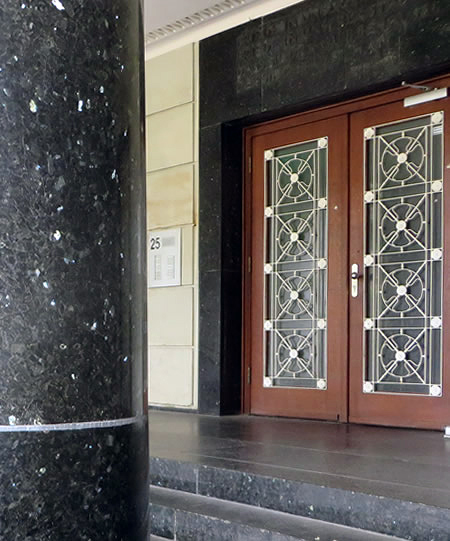
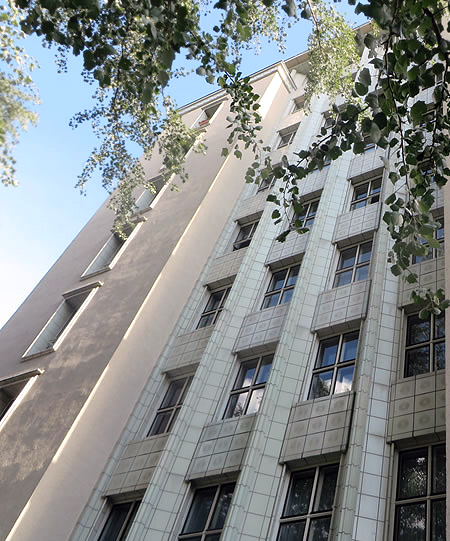
Designed by the architect Hermann Henselmann in neoclassically influenced 'Stalinist' style, work began on the groundbreaking residential complex in 1951.
Enthusiastically greeted as a symbol of progressive urban renewal, the Hochhaus appeared on posters extolling East Berlin's new-build programme, featured on a GDR postage stamp (below), and was even commemorated in the lyrics of a popular song.
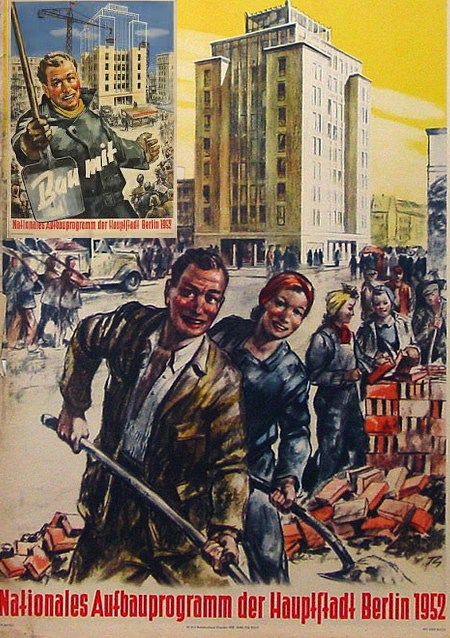
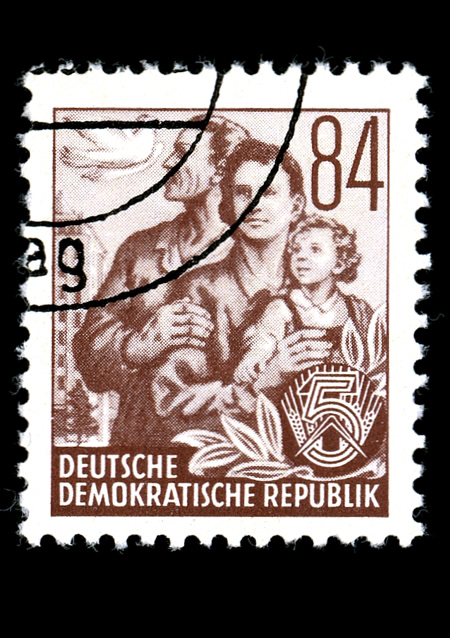
This sense of celebration is reflected, too, in remarkable stone friezes adorning adjacent apartment blocks that also formed part of the original Weberwiese complex (below).
Depicting East Berliners heralding the construction of a new, socialist capital, the figures include a surprisingly rare depiction of a Trümmerfrau, one of the legions of women who helped clear the city of rubble in the aftermath of WWII.
The first residents moved into the spacious, well-equipped apartments in 1952, and the same year, work began on the far more ambitious redevelopment of the Karl-Marx-Allee (then known as Stalinallee).
Following the success of the Weberwiese, Hermann Henselmann was again given the task of designing much of the avenue's stately 'wedding cake' architecture, including the iconic domed towers at Frankfurter Tor.
Today, of course, the imposing boulevard is one of Berlin's leading attractions, but it's well worth taking a short detour to visit the lesser-known architectural and artistic treasures of the Weberwiese - and to see the place where the rebuilding of the socialist city actually began.
See also:
Berlin's modernist quarter
A secret cinema
A GDR mural
Hochhaus an der Weberwiese: Marchlewskistraße 25, 10243 Berlin; GDR friezes, Marchlewskistraße 16-22
